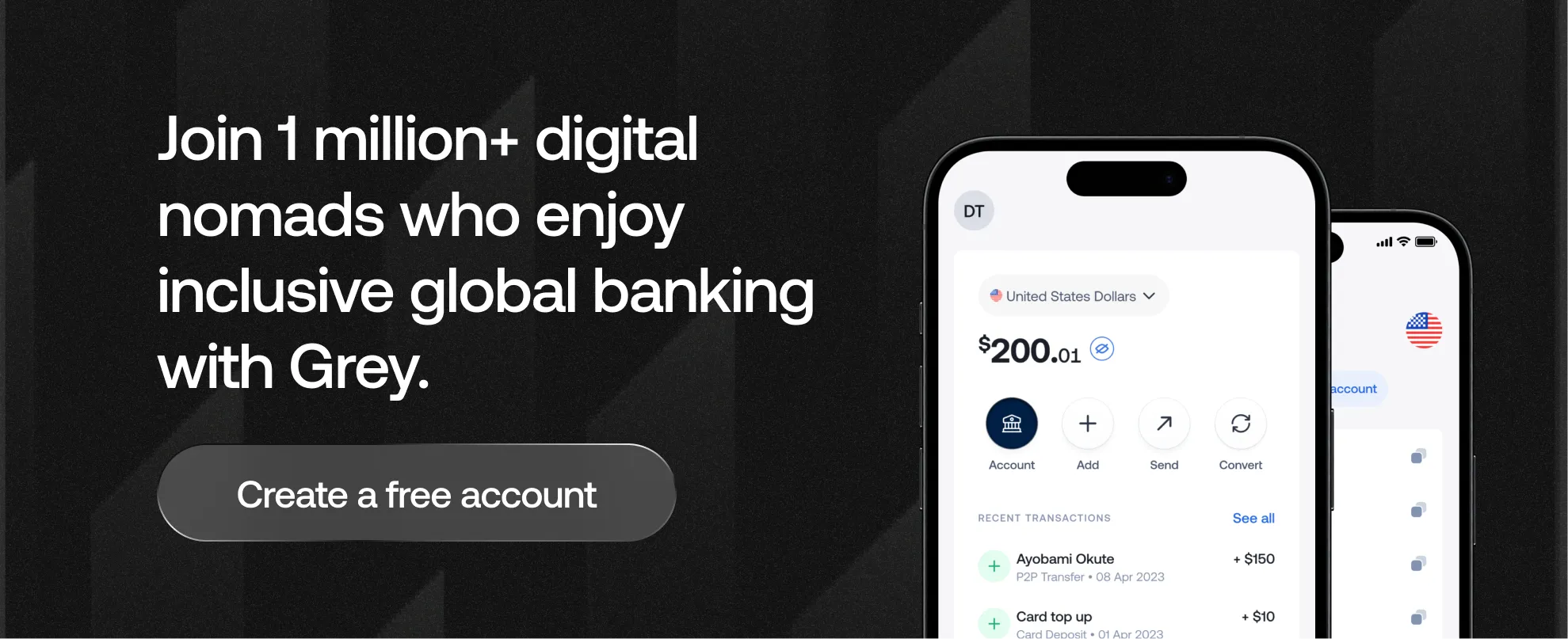

It’s a widely accepted truth that a US bank account makes it easier for international freelancers and business owners to conduct business across borders.
However, opening a US bank account as a non-resident can sometimes be a complex process. This post provides a comprehensive overview of how to open a non-resident bank account with three of the largest US banks — Chase, Wells Fargo, and Bank of America. We'll also discuss Grey, a simpler and more flexible way to manage your US dollars as a non-US resident.
Grey helps you open US, UK, and Euro bank accounts online, with a comparatively simpler process and you don't have to reside in the United States, United Kingdom, or European Union. More on that later.
A non-resident bank account is designed for people who live outside the US but need access to banking services in the country. These accounts can be beneficial for receiving USD payments, managing investments, or making international transfers. However, non-resident accounts are often subject to additional requirements and limitations.
Also read: How to open Pounds account as a non-UK resident
Chase is a popular option for non-residents due to its vast network of branches and range of account options. Here’s how to open an account as a non-resident:
Non-US residents are generally eligible to open a Chase account. If you have the correct paperwork, you can open a Chase checking account online — but if you don’t have US-issued documentation to verify your address and ID, you may need to visit a branch.
To open a Chase account, you’ll need the following documents:
It’s also important to note that you’ll need a US residential address, with adequate proof of address documents, to open a Chase account as a non-resident.
The result is that people who live part of the year in the US and have a property there may be able to open a Chase account, but non-residents who don’t have a US home address may find things difficult.
Chase offers various account options, including checking and savings accounts. For non-residents, a basic checking account might be most accessible, providing the essential banking services needed for international transactions.
Wells Fargo allows non-residents to open an account, but the process requires an in-person visit to a US branch.
Non-residents usually need to visit a US branch to set up an account. Wells Fargo representatives will then help guide you through the specific requirements.
To open an account with Wells Fargo, you’ll need the following:
Wells Fargo provides a range of checking and savings account options. Non-residents are usually eligible for the bank’s standard checking accounts, which allow for basic transactions, including receiving and transferring funds.
Bank of America is another well-known bank that provides banking services to non-residents, though applicants must meet specific requirements and open the account in person.
Non-residents can open accounts at Bank of America, but like Chase and Wells Fargo, you’ll need to visit a branch in person.
To open a Bank of America account as a non-resident, gather the following:
Bank of America offers basic checking accounts for non-residents. These are ideal for managing USD payments and making international transfers.
Opening a US bank account as a non-resident involves a few additional steps, but with some preparation, you can ensure a smooth experience. Here are some tips to help:
Opening a non-resident account with Chase, Wells Fargo, or Bank of America provides a reliable way to manage USD funds, handle payments, and simplify finances across borders. With the right preparation and documentation, you can establish a financial presence in the US and take advantage of the banking benefits available.
However, opening a traditional U.S. bank account might not be feasible for everyone due to in-person requirements and documentation needs. Fortunately, fintech solutions like Grey offer convenient, borderless financial services that can make managing international transactions easier for non-US residents. All you need to do is sign up on Grey
Opening a virtual account on Grey comes with several benefits:
Read on to see how non-US citizens can open a US bank account online
With a Grey account, you can experience limitless, inclusive global banking designed for you to receive, send, and convert multiple currencies without needing a physical bank visit. Create your free account today to get started.




.svg)
Back to top